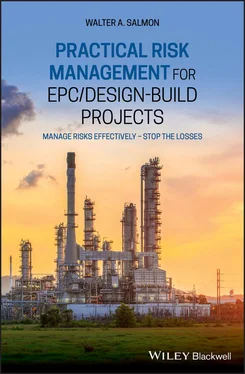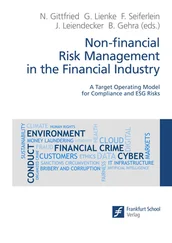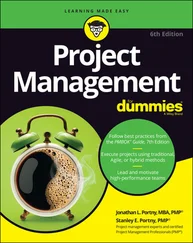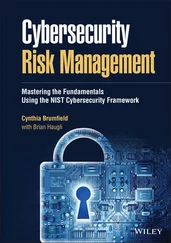To put the risks of the above scenarios into perspective, consider how much easier the task of the Contractor would be if the construction implementation work were to be set up under the following ideal risk reduction Traditional Contracting scenario (from the point of view of the Contractor):
1 all the Engineering work is to be undertaken by others (including the Detailed Design work),
2 all key equipment items are to be purchased directly from the Vendors by the Employer and installed under separate Subcontracts issued by the Employer,
3 specialist services installations too are to be undertaken by Subcontractors who will be tied into Subcontracts issued by the Employer,
4 a very reasonable time-frame for completion will be allowed, and
5 no Guaranteed Performance Outputs of any sort are required from the Contractor.
Even under the above setting of much reduced risks, a Contractor would still face many risk situations which, if they materialised, would prevent achievement of the expected profit level. Many Projects under the Traditional Contracting approach do in fact have many of those idealistic elements on board. Sadly, however, for Projects considered overall (construction work orientated), KPMG reported in March 2015 that ‘Owners continue to experience project failures: 53% suffered one or more underperforming projects in the previous year. For energy and natural resources and public sector respondents the figures were 71% and 90% respectively. Only 31% of all respondents' projects came within 10% of budget in the past 3 years. Just 25% of projects came within 10% of their original deadlines in the past 3 years’. 8 It is therefore very obvious that EPC Projects require a much more robust approach to Project Risk Management if the Managers of a Project are going to be able to hold their heads high when the Final Acceptance Certificate is issued.
3.6 Principal Disaster Areas on EPC Projects
In a nutshell, the ‘real and present danger’ for any EPC Contractor is the actual occurrence of any one of the following four disaster scenarios on its EPC Projects, since each issue mentioned is under the Contractor's direct control:
1 Time DisasterThe time for completion may be severely delayed due to poor management of the Engineering, Procurement, and/or Construction activities as well as the interfaces between them. This can then lead both to unrecoverable additional costs and the Contractor's income being seriously eroded due to the requirement to pay Liquidated Damages to the Employer to compensate for delayed completion.
2 Commercial DisasterEven if the Project is completed on time, the expenditure may significantly exceed the income due to the inadequacy of the Contractor's internal controls (not only in respect of purchases and subcontracted work but also for worker productivity and wastage levels).
3 Quality DisasterThe quality of the finished work may be well below the required standard. This could then lead to litigation over arguments as to whether or not the facility is suitable for its intended purpose. In the worst case scenario, it could lead to a complete breakdown of the facility and also involve loss of life.
4 HSE DisasterAn untoward health, safety, and/or environmental issue may cause a severe problem that could irreparably destroy the Contractor's reputation for a good while to come, as well as being costly to remedy (or provide compensation) for the negative effects experienced.
I have observed that far too few Contractors realise that, from the moment the Contract signing has been concluded, the Contractor has entered into the equivalent of a war zone, where time is the Contractor's principal enemy. The different ways in which time can be lost are many, some of which are almost indiscernible. Time moves along at a constant pace and is unrelenting in its progress, no matter how badly the Contractor needs to conserve time. The steady march of time steals meaningful progress from the Contractor in many areas of Project work, and its damage is very often added to by the Contractor's Team being too complacent or too slow to react to time being stolen. Consider, for example, the following non-exhaustive list of issues where time is more usually lost on Projects, many of whose causes (although not all) could be prevented with foresight:
1 late submission of Engineering Deliverables for review purposes by the Contractor's Engineering Team,
2 late review of Engineering Deliverables by the Employer's Team,
3 late receipt of Engineering Deliverables for Procurement and Construction purposes,
4 late placement of Purchase Orders,
5 late handing over of the Site,
6 late delivery of materials, goods, and equipment,
7 late instructions for changes arising from the Employer's side,
8 late mobilisation of construction equipment and manpower resources,
9 slow clearance of Punch Items, and
10 dealing with too much reworking, often at a late stage.
3.7 Maintaining the Project Schedule
Insisting on adherence to a Project Schedule (and updating it regularly to show actual progress) has nothing at all to do with being able to blame people if certain activities are delayed. It has everything to do with ensuring that the Contractor will have the necessary backup information and data available to be able to claim an appropriate extension of time if delays occur because of the Employer's action or inaction. The importance of keeping to the Project Schedule and avoiding loss of time cannot be stressed enough. This is a particularly valid observation if the Contract includes a provision for the Employer to terminate the Contract in the event that the Project is already so late against the Project Schedule that it appears that the Liquidated Damages will be fully consumed. Time cannot and never will be the Contractor's friend (and, as indicated earlier, very often time is the Contractor's worst enemy). If, therefore, the Contractor fails to develop a worthwhile Project Schedule or fails to take all steps necessary to adhere faithfully to such Schedule, then time will be given a great opportunity to destroy all the Contractor's other efforts to complete the Project successfully. Of course, saving time can be a double-edged sword, and every care must be taken to ensure that catch-up plans and acceleration arrangements do not jeopardise worker safety or health.
Still on the importance of not losing time, there is a classic error made by many Contractors in the situation where the Employer has indicated that a major change is being considered. That is to slow down, halt or re-sequence the contractual work scope, without first having received authority or formal advice from the Employer to do so. The best way for the Contractor to proceed in all such cases is to ignore the potential change and carry on as usual until such time as the Employer issues a formally signed instruction to do otherwise. I have lost count of the number of situations I have personal knowledge of where Contractors had, in all good faith, ignored the advice to continue without letting up. Instead, they delayed the work progress, only to later find that they had been held entirely responsible for the resultant delay to the contractually required completion date. All is fair in love and war, and there is rarely (if ever) a lot of love existing between the Employer and the Contractor when it comes to delayed Project completion. It should therefore come as no surprise that even the most reputable of Employers may resort to unfairly using the threat of Liquidated Damages against the Contractor in order to extract greater benefit (or action) from the Contractor than is otherwise merited.
3.8 Departmental Interface Issues
A key point to bear in mind is that the individual Departments responsible for the EPC activities are most definitely not independent of each other, even if their respective Managers believe differently. There are probably more Managers who believe that their Departments are independent, and that their Departments are their own personal fiefdoms, than you might think possible. On the contrary, there is a lot of interaction required between those Departments, and it is often at the interfaces between them where the work processes break down. The below set of items provides just a few examples of where things can go wrong at the Departmental interfaces.
Читать дальше












